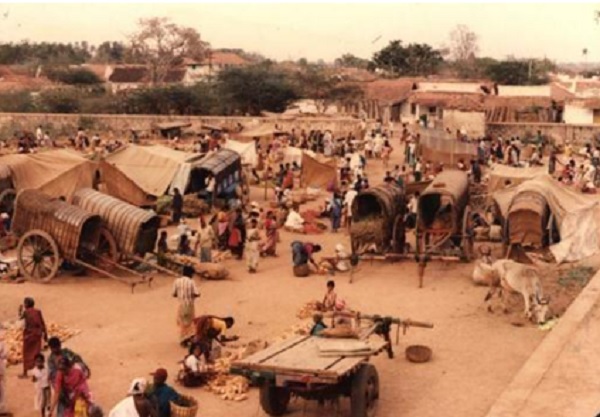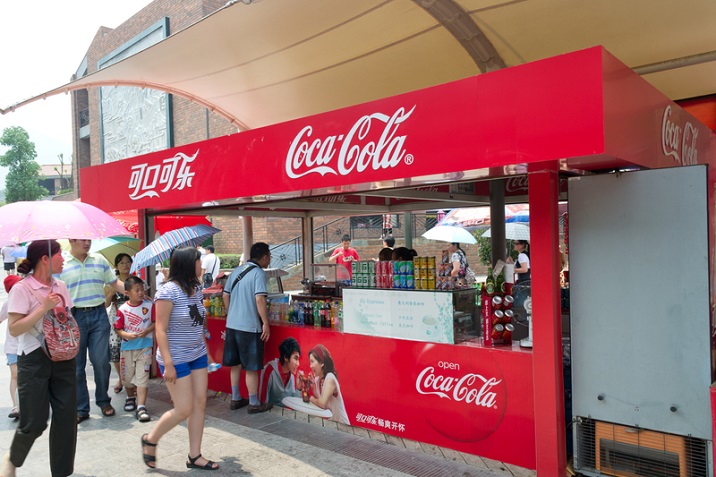Rural Marketing- an Introduction
defining the term Rural
The quest to discover the real rural India still continues in great earnest. Almost every economic agency today has a definition of rural India. Here are a few definitions:
According to the Planning Commission, a town with a maximum population of 15,000 is considered rural in nature. In these areas the panchayat makes all the decisions. There are five persons in the panchayat. The National Sample Survey Organisation (NSSO) defines ‘rural’ as follows:
- An area with a population density of up to 400 per square kilometer,
- Villages with clear surveyed boundaries but no municipal board,
- A minimum of 75% of male working population involved in agriculture and allied activities.
RBI defines rural areas as those areas with a population of less than 49,000 (tier -3 to tier-6 cities).
It is generally said that the rural areas house up to 70% of India’s population. Rural India contributes a large chunk to India’s GDP by way of agriculture, self-employment, services, construction etc. As per a strict measure used by the National Sample Survey in its 63rd round, called monthly per capita expenditure, rural expenditure accounts for 55% of total national monthly expenditure. The rural population currently accounts for one-third of the total Indian FMCG sales.
Rural marketing involves a bunch of processes that includes developing, pricing, promoting, distributing rural specific product and service which satisfies the consumer demand and also achieves organizational objectives as expected from the target market. It is basically a three-way marketing stage where the transactions can be −
- Urban to Rural − It is a process of selling the products and services by urban marketers in rural areas. These products mostly include pesticides, FMCG products, consumer durables, etc.
- Rural to Urban − It is a process where a rural producer sells his products in urban market. This may or may not be direct, but mostly there are middlemen, agencies, government co-operatives etc. who take initiatives in the successful running of the selling process happen successfully in an appropriate price.
- Rural to Rural − It is a process which includes selling or exchange of agricultural products, tools, cattle, carts and others to another village in its proximity.
- Rural marketing in Indian economy can be classified mostly under the following two categories −
- the markets for consumer durables consists of both durable and non-durable goods
- the markets for agricultural products which include fertilizers, pesticides, seeds, and so on.
Rural marketing in India is sometimes mistaken by people who think rural marketing is all only about agricultural marketing. Rural marketing determines the carrier of business activities from urban sectors to the rural regions as well as the marketing of various products manufactured by the non-agricultural workers from rural to urban areas.The following are the characteristics of rural markets −- Here agriculture is first and also the main source of income.
- This income is seasonal in nature and fluctuates as it depends on crop production.
- Though it is large, the rural market is geographically scattered.
- It shows religious, cultural and economic disparities.
- The market is not much developed, because the people here exercise adequate purchasing power.
- These markets have their orientation in agriculture, with poor standard of living, low per capital income and backwardness.
- It shows sharper and different regional preferences with distinct predictions, habit patterns and behavioral aspects.
- Rural marketing process is an outcome of the general rural development process initiation and management of social and economic change in the rural sector is the core of the rural marketing process.
Challenges in Rural Market
There are various challenges that hinder the progress of rural market. Marketers face a number of problems like physical distribution, logistics, no proper and effective sales force and no effective marketing communication when they enter into the business of rural markets.The following are the major problems faced in the rural markets −Standard of Living
A large part of the population in rural areas lies below poverty line. Thus the rural market is also underdeveloped and the marketing strategies have to be different from the strategies used in urban marketing.Low literacy levels
The low literacy levels in rural areas leads to problem in communication with the market and the print media has less utility as compared to the other media of communication.Low Per Capita Income
In rural market, agriculture is the main source of income and hence expense capacity depends upon the agricultural produce. Demand may or may not be stable.
Transportation and Warehousing
Transportation and supply chain management are the biggest challenges in rural markets. As far as by road transportation is concerned, about 50% of Indian villages are connected by roads to the nearest big cities. The rest of the rural markets do not have proper road linkage to other cities which causes problems in physical distribution.Many villages are located in hilly remote areas which is difficult to connect with them through roads. Warehousing is another major problem in rural areas, as there you will hardly get any organized agency to look after the storage issue. The services given by central warehousing corporation and state warehousing corporations are limited only to urban and suburban areas.Ineffective Distribution Channels
The distribution chain is not organized and also requires a large number of intermediates, which in return increases the cost. Due to lack of appropriate infrastructure, manufacturers are giving back steps to open outlets in these areas. That is why they need to dependent on dealers, who are rarely available for rural area which increases the challenges for marketers.Many Languages and Diversity in Culture
Factors like different behavior and language of every respective area increases difficulties to handle the customers. The sales force is required to match the various requirements of the specific areas according to their culture.Lack of Communication System
Quick communications facilities like computer, internet and telecommunication systems etc. are the need of rural market which is a biggest problem due to lack of availability. The literacy level in the rural areas is quite low and consumer’s behavior is kind of traditional, which is a cause of problem for effective communication.Dummy Brands
Cost is an important factor for rural consumers which determine purchasing decision in rural areas. A lot of fake brands or products that look similar to the original one are available, providing low cost options to the rural consumers. Most of the time, the rural consumers may not be aware of the difference due to illiteracy.Seasonal Demand
Demand may be seasonal in rural market due to dependency on seasonal production of agricultural products and the income due to those products. Harvest season might see an increase in disposable income and hence more purchasing power.Opportunities in Rural Market
To solve the problems of rural market and rural marketing in India, the following points need to be considered by marketers −Physical Distribution and transportation
Regarding the problems of physical distribution, the marketers may have stockiest/ clearing-cum-forwarding (C&F) agents at strategic location for facilitate the physical distribution for its products in the rural market. The important advantage of this scheme is that the costs of physical distribution can be shared between the companies and stockiest.The different modes of transportation based on availability of tracks should also be beneficial to the companies. Even to this day, bullock-cart plays a very vital role in physical distribution where the roads are not available. Some of the leading MNCs use delivery vans in rural areas. These delivery vans take the products to the retail shops in every corner of the rural market and enable the companies to establish direct sales contact with majority of the rural consumers. This in turn helps in sales promotion.
Rural Market and Retail Sales Outlets
The rural market consists of a number of retail sales outlets along with low price shops under the public distribution system. The government should take initiatives to encourage private shopkeepers and cooperative stores to come forward and establish their business in rural areas.Fertilizer companies should open their outlets for proper distribution of fertilizer to the farmers. In addition, the companies dealing in consumer goods can also apply this model and appoint a number of retailers in rural market and attach them to the stockiest who distributes the goods to the retailers as per the potential demand of the market. This approach will help the companies penetrate into the interior areas of the rural markets.Sales Force Management
To solve the problems of sales force management, the company takes due care in the recruitment and selection of sales people because the traits they require are different from that of the urban sales persons. These sales people must be fluent in the local/regional language and also have patience to deal with rural consumers.Controlling and operating of such a large and scattered sales force, supervising them in sales calls, guiding and attending to their official and personal problems, and motivating them for getting better results should be an exciting and challenging task for the sales manager. Thus, the people operating in rural areas should have an inherent zeal to serve the rural peoples and to connect with them.
Marketing Communication
For marketing communication in rural areas, the companies should use organized forms of media like TV, Radio, cinema and POP (point of purchase) advertising. In recent times, television is gaining popularity in rural areas but due to lack of supply of electricity, radio is performing quite better.The rural people need demonstration, short-feature films and direct advertisement films that combine knowledge and perform as better rural marketing communication. The companies now also use audiovisual publicity vans that sell the products with promotion campaign directly. Companies can also organize village fairs, drama shows, and group meetings to convince the rural consumers about the products and services.For the rural markets, those sales people are preferred for selection who are willing to work in rural areas like Sarpanch, Pradhan’s and other elderly persons. Marketers can also approach them to propagate their messages, because these persons could be effective communicators within the rural peoples.Demand Base and Size
Indian rural market has a vast demand base and size. Rural marketing involves the process of developing, promoting, distributing rural area specific products and service exchange between rural and urban market which satisfies customer demand and also achieves organizational goals. As a part of development program economic development is concern, government is making continuous efforts towards rural development.

Comments
Post a Comment